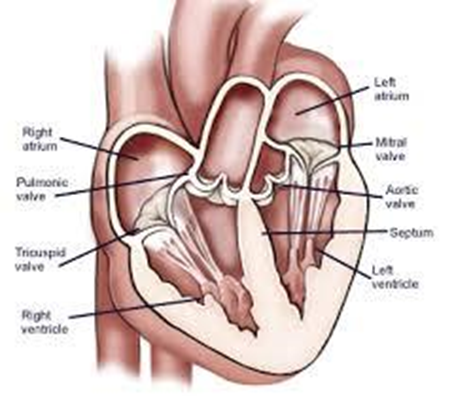Yellow sclera may indicate dysfunction of which of the following organs?
Kidneys
Appendix
Liver
Spleen
The Correct Answer is C
a. Kidneys: Kidney dysfunction can affect waste elimination and fluid balance but does not typically cause yellow sclera.
b. Appendix: The appendix is involved in the immune response and gut flora regulation but not in causing yellow sclera.
c. Liver: Liver dysfunction can lead to jaundice, where bilirubin accumulates in the blood and tissues, causing yellowing of the skin and sclera.
d. Spleen: The spleen is involved in blood filtration and immune response but does not directly cause yellow sclera
Nursing Test Bank
Naxlex Comprehensive Predictor Exams
Related Questions
Correct Answer is B
Explanation
a. Pulmonary: The pulmonary valve separates the right ventricle from the pulmonary artery, which carries blood to the lungs.
b. Atrioventricular: The heart has four chambers: two upper atria and two lower ventricles. The atrioventricular valves (AV valves), also known as tricuspid and mitral valves, separate the atria from the ventricles and prevent blood from flowing backward from the ventricles to the atria.

c. Semilunar: Semilunar valves (aortic and pulmonary) are located at the base of the aorta and pulmonary artery, preventing blood from flowing back into the ventricles.
d. Aortic: The aortic valve separates the left ventricle from the aorta, the main artery carrying blood away from the heart to the body.
Correct Answer is D
Explanation
a. Ureters are connected inside the urinary bladder by a two-way valve: The ureters connect to the urinary bladder through openings that act as one-way valves to prevent urine from flowing back into the ureters.
b. Ureters are fibrotic tubes connecting the kidneys to the urinary bladder: Ureters are not fibrotic; they are muscular tubes lined with a mucous membrane that propels urine from the kidneys to the bladder.
c. Ureters are covered by an outer layer of epithelial tissue: The outermost layer of the ureters is actually composed of connective tissue (adventitia), not epithelial tissue.
d. Ureters are extraperitoneal tubular structures: This is correct. Ureters are located outside the peritoneal cavity.
Whether you are a student looking to ace your exams or a practicing nurse seeking to enhance your expertise , our nursing education contents will empower you with the confidence and competence to make a difference in the lives of patients and become a respected leader in the healthcare field.
Visit Naxlex, invest in your future and unlock endless possibilities with our unparalleled nursing education contents today
Report Wrong Answer on the Current Question
Do you disagree with the answer? If yes, what is your expected answer? Explain.
Kindly be descriptive with the issue you are facing.
